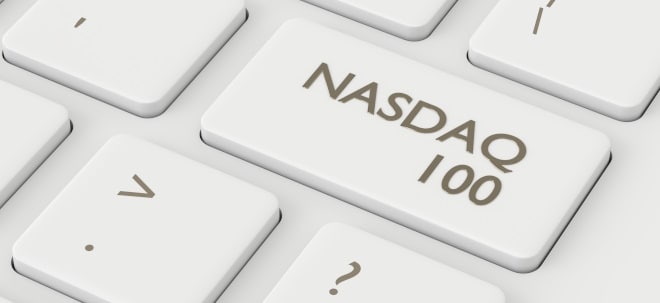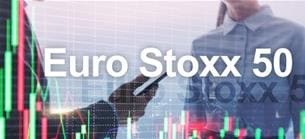DAX derivatives: global exposure and anticipated volatility during the German elections
Werte in diesem Artikel
As the German parliamentary elections on 23 February 2025 draw near, global investors are eyeing potential prospects. One of such possibility lies in DAX® derivatives, which could be an efficient risk management tool for navigating the election cycle. The DAX® index, now consisting of 40 major German companies, is not just a barometer of the German economy but also a reflection of global economic trends. With roughly 20 percent of DAX® companies' sales generated within Germany, the index is significantly influenced by international markets. This global exposure makes DAX® derivatives a compelling choice for traders looking to capitalize on both domestic and international political events.Data observations reveal that European and U.S. benchmark index futures, including DAX® index futures, are highly correlated and tend to move in the same direction during regular times. Interestingly, the DAX® futures have shown more volatility in response to U.S. presidential elections than to internal German political events. This can be attributed to the global nature of DAX® companies, which are more affected by international trade policies and economic conditions than by local political changes.As of 12 February 2025, the DAX® Futures were trading at 22,460, reflecting a 10.3 percent year-to-date growth, compared to approximately 3 percent for the S&P 500*). The DAX®'s current valuation of around 16 times earnings presents an attractive alternative to the S&P 500's multiple of 25. This valuation gap offers potential opportunities for investors seeking exposure to global growth at more reasonable prices.The upcoming German elections are expected to introduce volatility into the market. Historical data shows a typical volatility smile for DAX® Options expiring around the election date, with higher implied volatility for options expiring after the elections. This suggests that traders anticipate significant market movements and are positioning themselves accordingly. Moreover, the open interest distribution for DAX® Options expiring on 21 February and 21 March indicates a strong preference for downside protection, with a higher concentration of out-of-the-money put options. This reflects market participants' cautious stance and their desire to hedge against potential election-related risks.Figure 1: Open interest distribution for DAX Options 21 Feb expiry21 Feb expiry represents 13.97% of total open interest in DAX® Options. The most bullish position is 4,288 call options placed at the 22,000 strike. Put/call ratio stands at 2.10.Source: BloombergFigure 2: Open interest distribution for DAX Options 21 Mar expiryThe March expiry has a put/call open interest ratio of 3.24, with open interest heavily concentrated in the out-of-the-money put options, reflecting the downside protection that market participants are seeking.Source: BloombergIn summary, DAX® derivatives offer unique perspectives for traders to navigate the German election cycle. With its global exposure, attractive valuation, and anticipated volatility, the DAX® index presents a strategic option for those looking to diversify their index trading exposure. As always, it's essential to stay informed and consider the broader economic and political landscape when making trading decisions.* Data from Bloomberg. S&P 500® Index used for illustrative purposes.Weiter zum vollständigen Artikel bei Deutsche Boerse AG Unsponsored American Deposit
Ausgewählte Hebelprodukte auf Deutsche Börse
Mit Knock-outs können spekulative Anleger überproportional an Kursbewegungen partizipieren. Wählen Sie einfach den gewünschten Hebel und wir zeigen Ihnen passende Open-End Produkte auf Deutsche Börse
Der Hebel muss zwischen 2 und 20 liegen
| Name | Hebel | KO | Emittent |
|---|
| Name | Hebel | KO | Emittent |
|---|
Quelle: EN, Deutsche Boerse
Nachrichten zu Deutsche Börse AG
Analysen zu Deutsche Börse AG
| Datum | Rating | Analyst | |
|---|---|---|---|
| 25.03.2025 | Deutsche Börse Neutral | JP Morgan Chase & Co. | |
| 26.02.2025 | Deutsche Börse Neutral | JP Morgan Chase & Co. | |
| 21.02.2025 | Deutsche Börse Buy | Deutsche Bank AG | |
| 14.02.2025 | Deutsche Börse Neutral | JP Morgan Chase & Co. | |
| 14.02.2025 | Deutsche Börse Sector Perform | RBC Capital Markets |
| Datum | Rating | Analyst | |
|---|---|---|---|
| 21.02.2025 | Deutsche Börse Buy | Deutsche Bank AG | |
| 13.02.2025 | Deutsche Börse Kaufen | DZ BANK | |
| 12.02.2025 | Deutsche Börse Buy | Deutsche Bank AG | |
| 12.02.2025 | Deutsche Börse Buy | Warburg Research | |
| 12.02.2025 | Deutsche Börse Buy | UBS AG |
| Datum | Rating | Analyst | |
|---|---|---|---|
| 25.03.2025 | Deutsche Börse Neutral | JP Morgan Chase & Co. | |
| 26.02.2025 | Deutsche Börse Neutral | JP Morgan Chase & Co. | |
| 14.02.2025 | Deutsche Börse Neutral | JP Morgan Chase & Co. | |
| 14.02.2025 | Deutsche Börse Sector Perform | RBC Capital Markets | |
| 13.02.2025 | Deutsche Börse Neutral | Goldman Sachs Group Inc. |
| Datum | Rating | Analyst | |
|---|---|---|---|
| 30.07.2020 | Deutsche Börse Sell | Warburg Research | |
| 15.07.2020 | Deutsche Börse Sell | Warburg Research | |
| 24.02.2020 | Deutsche Börse Sell | Joh. Berenberg, Gossler & Co. KG (Berenberg Bank) | |
| 04.12.2019 | Deutsche Börse Sell | Joh. Berenberg, Gossler & Co. KG (Berenberg Bank) | |
| 30.10.2019 | Deutsche Börse Sell | Joh. Berenberg, Gossler & Co. KG (Berenberg Bank) |
Um die Übersicht zu verbessern, haben Sie die Möglichkeit, die Analysen für Deutsche Börse AG nach folgenden Kriterien zu filtern.
Alle: Alle Empfehlungen


